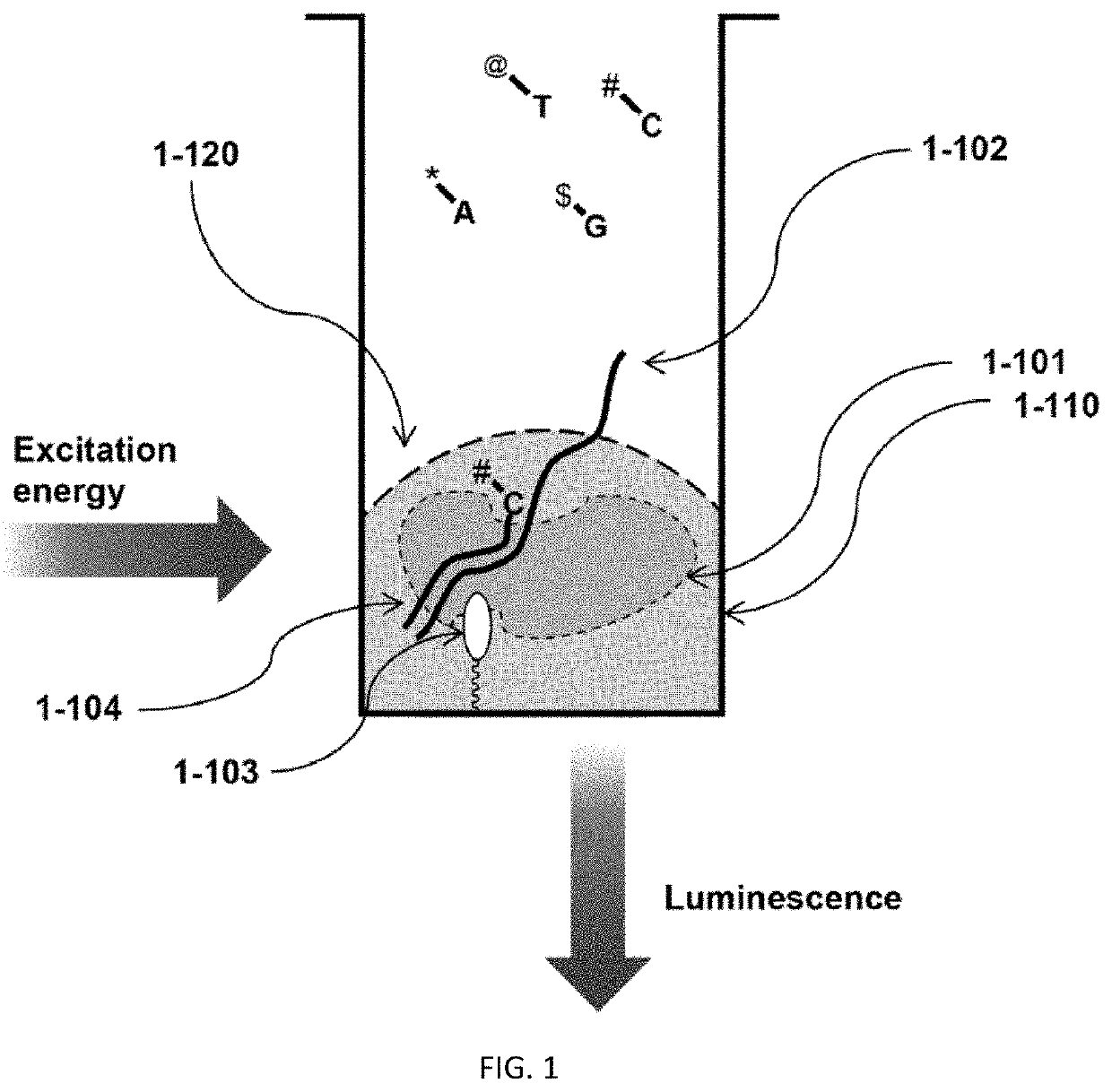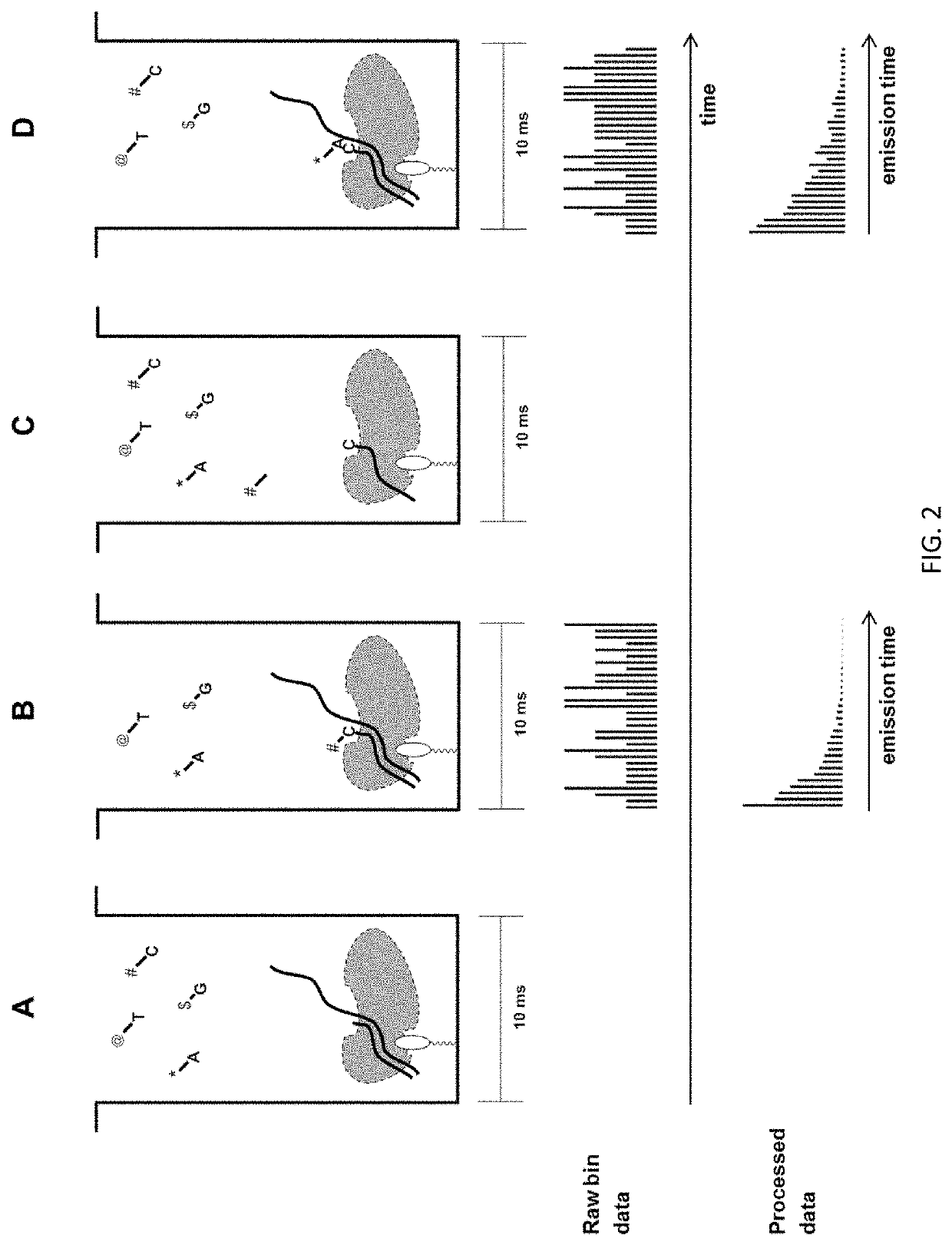Methods to minimize photodamage during nucleic acid and peptide sequencing
a nucleic acid and peptide sequencing technology, applied in the field of methods to minimize photodamage during nucleic acid and peptide sequencing, can solve the problems of reducing the accuracy of organic luminescent molecules, instabilities and potential toxicities of dyes or fluorophores, and a substantial limitation of single-molecule sequencing advancement, so as to minimize the extent of photo-induced degradation
- Summary
- Abstract
- Description
- Claims
- Application Information
AI Technical Summary
Benefits of technology
Problems solved by technology
Method used
Image
Examples
example 1
valuations in a DNA Sequencing Application
[0296]An array of sample wells on a CMOS chip was functionalized with biotin and azide coupling moieties. A sample containing a DNA molecule of interest was loaded into the sample wells. Subsequently, a graft copolymer of PLL-PEG comprising a trolox quenching moiety was added to the sample well, and biotin coupling moieties were conjugated to the copolymer in a click chemistry reaction, in accordance with the workflow illustrated in FIG. 8. A DNA polymerase was added to the sample well, and sequencing by synthesis allowed to commence.
[0297]As shown in FIG. 10, an average (or mean) accuracy of 74.6% was observed in end nucleic acid sequencing performance, and a “best” accuracy of 91.9% was observed.
[0298]This workflow was repeated for several other coupling moiety-copolymer combinations (with streptavidin-biotin conjugates). In one such workflow, a graft copolymer of PLL-PEG comprising a cyclooctatetraene (COT) quenching moiety was added to t...
PUM
| Property | Measurement | Unit |
|---|---|---|
| volumes | aaaaa | aaaaa |
| volume | aaaaa | aaaaa |
| volume | aaaaa | aaaaa |
Abstract
Description
Claims
Application Information
 Login to View More
Login to View More - R&D
- Intellectual Property
- Life Sciences
- Materials
- Tech Scout
- Unparalleled Data Quality
- Higher Quality Content
- 60% Fewer Hallucinations
Browse by: Latest US Patents, China's latest patents, Technical Efficacy Thesaurus, Application Domain, Technology Topic, Popular Technical Reports.
© 2025 PatSnap. All rights reserved.Legal|Privacy policy|Modern Slavery Act Transparency Statement|Sitemap|About US| Contact US: help@patsnap.com



